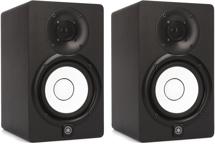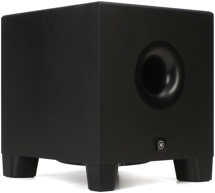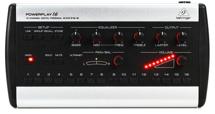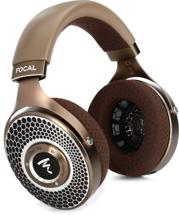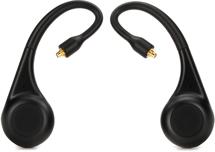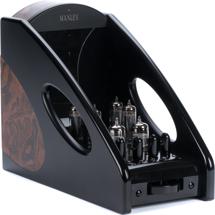Studio Monitors
Read our Studio Monitors Buying GuideGet More at Sweetwater
About Studio Monitors
Ever since Altec Lansing introduced the Duplex 604 in 1944, mix engineers have relied on studio monitors to provide them with the accurate details needed to make critical mixing decisions. Studio monitors come in a variety of configurations with many different options. There are active studio monitors with built-in amplifiers and passive studio monitors that use external amplifiers, nearfield studio monitors with small low-frequency drivers and large studio monitors with multiple drivers for mid and low frequencies, and some studio monitors even include onboard DSP for acoustic management. Each style and configuration of studio monitor has its advantages.
Studio Monitor Size & Cabinet Configuration
Studio monitors come in configurations ranging from small nearfield studio monitor models popularized in the late ’70s by Yamaha’s NS-10 to larger tri-amped studio monitor models found in upscale production houses. Small reference monitors, such as Avantone MixCubes, are great for getting a consumer’s perspective on your mix. But most studio monitors are designed to provide as flat and uncolored a sound as possible, and they generally include a woofer for low frequencies and a tweeter for high frequencies. The size of the woofer determines the range and clarity of bass and lower midrange frequencies, and otherwise identical studio monitors in the same series often come with a range of woofer sizes. Additional speakers in studio monitors meant for midrange frequencies allow the monitor to more efficiently express the complete frequency range, but cost and size can make overly large studio monitors impractical for smaller recording studios and home studios.
Powered Studio Monitors vs. Passive Studio Monitors
There are two basic types of studio monitors: powered studio monitors, also known as active studio monitors, and unpowered studio monitors, also known as passive studio monitors. Although powered studio monitors first gained popularity in the early 2000s, they are more common today than passive monitors. These monitors typically feature active crossovers and multiple built-in amplifiers that are designed to provide ideal power to each individual speaker. Active studio monitors such as KRK Rokit series models may also include simple equalizers and gain controls that allow you to adjust for frequency imbalances in your room. More advanced studio monitor models, such as JBL’s LSR 6000 line, include sophisticated DSP to compensate for more complex room acoustics. Passive studio monitors are relatively rare today, but some engineers swear by them. Although they require separate power amplifiers, their lack of onboard electronics may contribute to the reputation for pristine sound high-end passive monitors enjoy, such as those made by Amphion.
Subwoofers & Surround Sound Systems
Subwoofers have become increasingly common in modern recording studios, both for standard stereo mixing and for surround sound media production. Adding a studio subwoofer to a stereo pair of studio monitors allows you to monitor in 2.1 stereo. The benefit of a 2.1 setup is that it extends the low-frequency range of your monitors and allows the low-frequency drivers to more efficiently produce midrange frequencies. Because the bass frequencies produced by the subwoofer aren’t as directional as mids and highs, a single subwoofer is all you need. While you can create your own surround sound monitoring setup, there are also special packages by manufacturers such as Genelec that include a subwoofer and five or more matched satellite speakers for easy surround monitoring.
Studio Monitor Management & Monitoring Headphones
Many studios use multiple sets of studio monitors to check mixes, and it’s common practice to A/B between typical consumer speakers and reference studio monitors during the final stages of mixing. Studio monitor management systems such as the Dangerous Music Monitor ST and the Mackie Big Knob series make switching between sets of studio monitors or bypassing subwoofers easy. In addition to studio monitors, a pair of studio-grade monitoring headphones, such as the AKG K240s, can be extremely useful for critical listening, and most studio monitor management systems also include high-quality headphone amplifiers.
More Studio Monitor Articles
Studio Monitors Buying Guide
Choosing the right studio monitors doesn't have to be a tricky process. Sweetwater's expert content team will break it down for you!
Studio Monitor Placement " 5 Tips for Optimal Sound
Many of us who record or mix these days don't have the luxury of working in purpose-built control rooms " learn to make the most of what you have!

